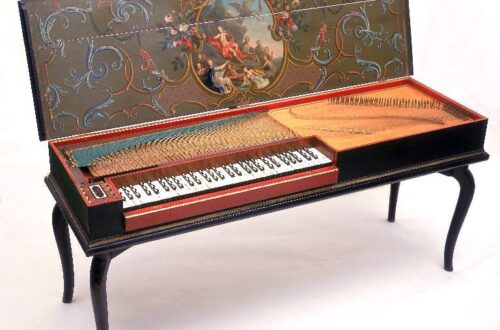
Children’s classical music
 Classical composers devoted many pages of their work to children. These musical works are written taking into account the characteristics of children’s perception, many of them are specially written for young performers, according to their technical capabilities.
Classical composers devoted many pages of their work to children. These musical works are written taking into account the characteristics of children’s perception, many of them are specially written for young performers, according to their technical capabilities.
The world of children’s music
Operas and ballets, songs, and instrumental plays have been created for children. R. Schumann, J. Bizet, C. Saint-Saens, A.K. addressed the children’s audience. Lyadov, A.S. Arensky, B. Bartok, S.M. Maykapar and other venerable composers.
Many composers composed works for their own children, and also dedicated their works to the children of their relatives and friends. For example, I.S. Bach, teaching music to his children, wrote various pieces for them (“The Music Book of Anna Magdalena Bach”). The appearance of the “Children’s Album” by P.I. Tchaikovsky is indebted to the composer’s communication with the children of his sister and his brother’s pupil.
In music for children, composers of various styles have common features:
- bright, almost visible imagery;
- clarity of musical language;
- clarity of musical form.
The world of childhood in music is bright. If a slight sadness or sadness slips through him, then it quickly gives way to joy. Often composers created music for children based on folklore. Folk tales, songs, dances, jokes, and tales captivate children with vivid images, evoking a lively response from them.
Musical tales
Fairy-tale images always captivate children’s imaginations. There are many musical compositions, the names of which immediately orient the little listener or performer to the magical, mysterious world that is so dear to a child. Such works are distinguished by picturesqueness, saturation of the musical fabric with sound-imagery techniques.
“Tales of Mother Goose” for chamber orchestra M. Ravel composed for the children of his close friends in 1908. In the folklore of various European countries, the name of Mother Goose is borne by a nanny-storyteller. The British understand “Mother Goose” as a general expression – “old gossip.”
The music of this work is designed for children’s perception. It is distinguished by convex programming. The dominant role in it is played by bright orchestral timbres. Opens the suite “Pavane to the Sleeping Beauty” – the smallest piece at 20 bars. A gentle flute plays a soothing, charming melody, which then varies with other solo wooden instruments.
The 2nd piece is called “Tom Thumb”. Here the search for the path of a lost tiny boy is interestingly shown – tertsian passages of muted violins continuously rush up, then down, then return. The noise of wings and the chirping of birds flying to his aid are conveyed by virtuoso glissandos and trills of three solo violins, and exclamations of a flute.
The 3rd tale is about the bathing empress of Chinese figurines, who swims to the sounds of puppet music performed by her subjects on walnut shell instruments. The piece has a Chinese flavor; its themes are based on the pentatonic scale characteristic of Chinese music. A graceful puppet march is performed by an orchestra that includes celesta, bells, xylophone, cymbals and tom-toms.
M. Ravel “Ugly – Empress of the Pagodas”
from the series “Mother Goose”
The 4th play, a waltz, tells about a Beauty who fell in love with the Beast for his kind heart. In the finale, the spell is broken, and the Beast becomes a handsome prince. Children can easily recognize the heroes of the fairy tale: by the sound of the graceful melody of the clarinet – the Beauty, by the heavy theme of the contrabassoon – the prince enchanted by the Beast. When a miraculous transformation takes place, the Prince begins to own the melody of the solo violin, and then the cello.
The finale of the suite paints a picture of a fabulous and beautiful garden (“Magic Garden”).
Contemporary composers for children
Before the creators of children’s music in the 20th century. The difficult task of introducing young performers and listeners to the perception of the features of a significantly updated musical language arose. Musical masterpieces for children are created by S.S. Prokofiev, K. Orff, B. Bartok and other outstanding composers.
Classic of modern music S.M. Slonimsky wrote a wonderful series of notebooks of piano pieces for children and adults, “From 5 to 50,” which can be called a piano school for studying modern musical language. The notebooks include miniatures for piano created by the composer in the 60-80s. The play “Bells” is full of modern sound production techniques. The young performer is invited to imitate the ringing of a bell by playing the open strings of the piano in combination with playing the keys. The play is distinguished by a variety of rhythmic figures and multi-component chords.
CM. Slonimsky “Bells”
Children’s songs have always been a favorite genre among composers of all times. Today, famous composers write funny, mischievous songs for cartoons beloved by children, such as G. G. Gladkov, the author of music for many children’s cartoons.
G. Gladkov Music from the cartoon “Box of Pencils”





